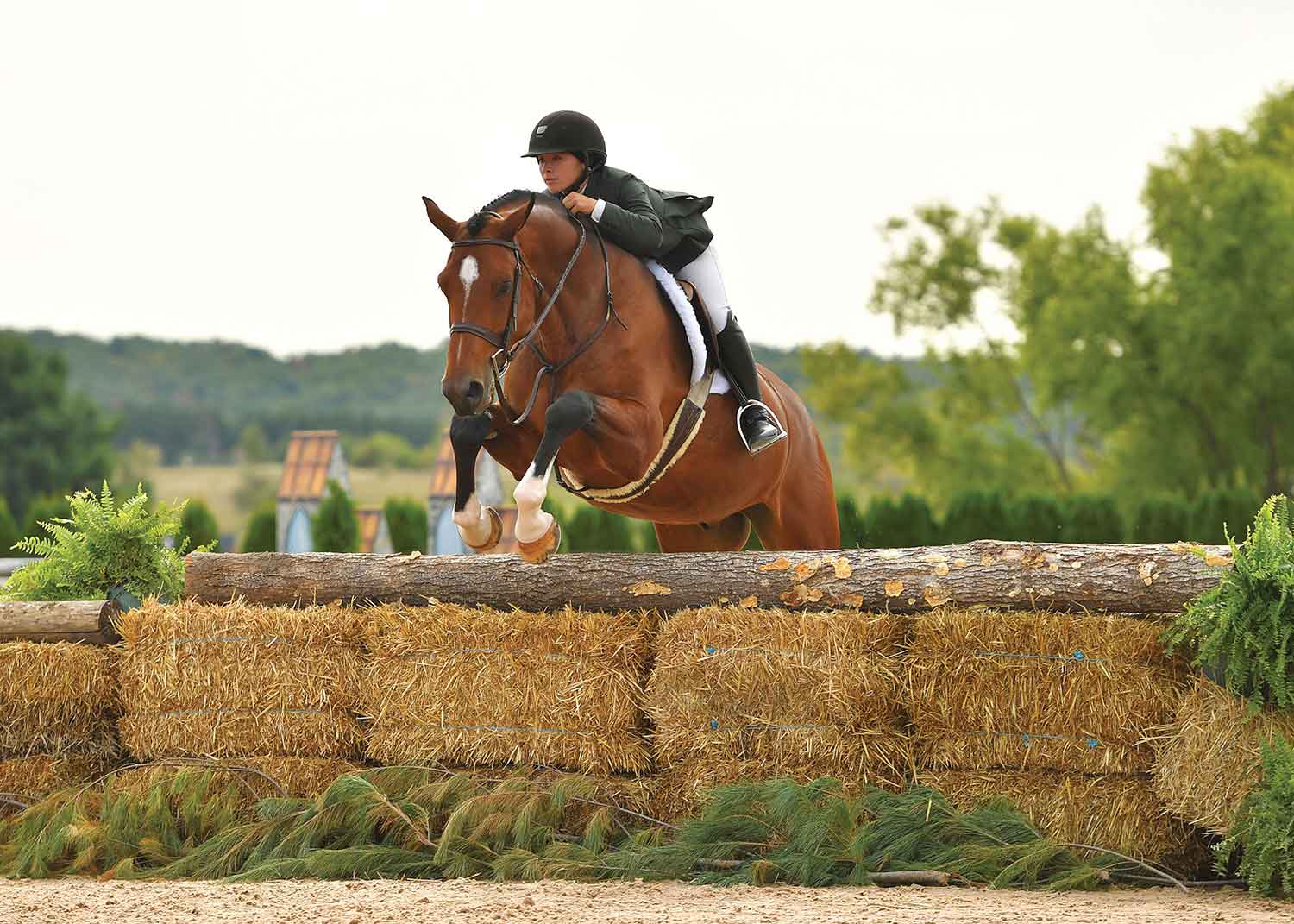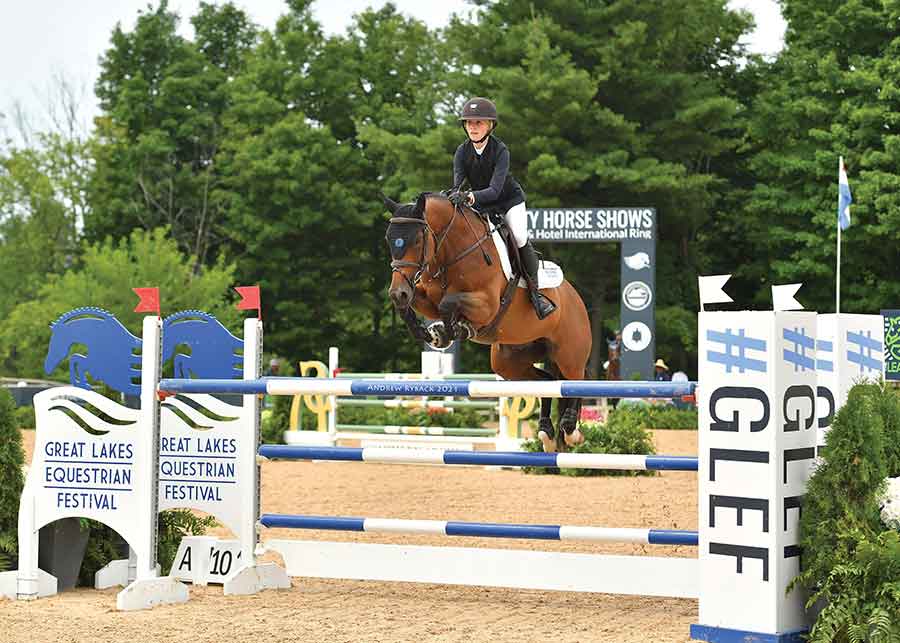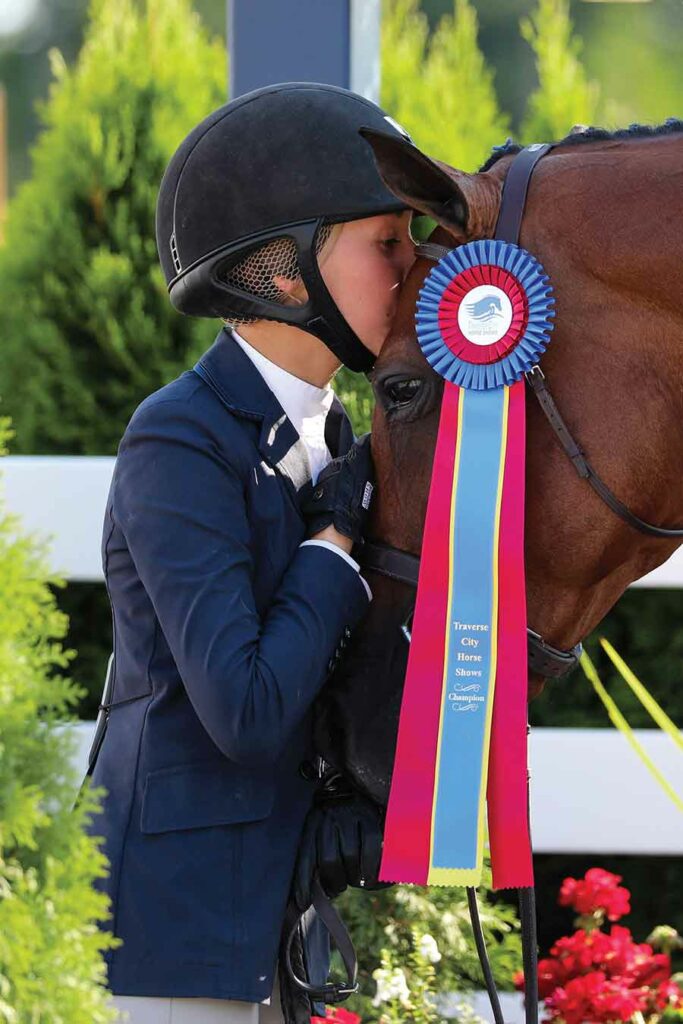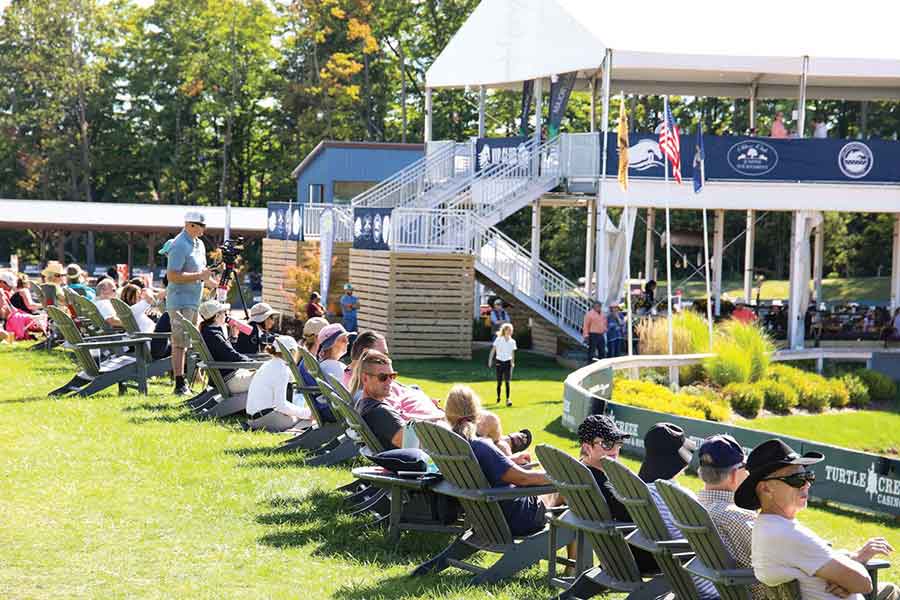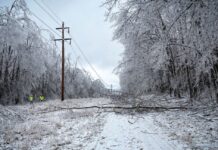When you think about horse competitions like hunting, jumping, and equitation, it conjures up images of primly dressed riders in their velvet riding caps, tailored jackets, and riding boots who exude an air of control and composure. It’s easy to forget that the other part of the team is a wild animal—one that has been trained and coached, but at the same time, has a will and disposition that is completely its own.
“It’s a unique opportunity to see a sport with two athletes, and only one of them is human,” said Lindsay Brock, marketing representative of Morrissey Management. “There’s always this moment of uncertainty if the horse is going to comply. It’s wild. So, there is something exciting about watching this human and this horse working together to achieve a goal.”
You can see this sort of beautiful dance between control and chaos at the many year-round events held by the Traverse City Horse Shows, which take place on the 130 acres of Flintfields Horse Park in Northern Michigan. The grounds host a variety of riders and enthusiasts, from 4- and 5-year-old youngsters learning to walk ponies around a ring to experienced seniors still enjoying a lifelong passion.
However, the 13 weeks of FEI (Fédération Equestre Internationale—the international governing body of equestrian sports)—with its jumper, hunter, and equitation competitions, really livens things up. This event brings world-class athletes to Traverse City to participate in everything from youth championships to Olympic-qualifying events. With six or seven rings running simultaneously, spectators can watch riders who are just beginning their careers and expert athletes returning from recent Olympic games.
“From June to September, we have athletes and their families coming to Northern Michigan from 48 states and 28 countries to participate in jumper, hunter, and equitation competitions,” said partner and event director, Matt Morrissey. “In just 13 weeks, we’re awarding over $7 million in prize money.”
The Traverse City Horse Shows started on the east side of the state, but with a rebranding and relocation in 2015, it has grown into one of the top events and venues in North America. Based on an economic impact study, the events have approximately a $120 million impact on Northern Michigan each year, with spectators, business owners, and the community all reaping benefits.
Competitors agree that it’s the location, as well as the points and prize money, that brings them to Flintfields year after year. “Without a doubt, one of the most common things we hear about the Traverse City Horse Shows is how much the competitors and their families love visiting the area,” said Brock. “With just one day off, the athletes love exploring the lake and dunes and enjoying the great restaurants, vineyards, and just the beauty of walking around Traverse City.”
Flintfields provides plenty of events to keep spectators busy as well. An active atmosphere is important to the site, which offers spectators ice cream socials, happy hours, and other special events, all while they spend the day watching and bumping up against premier athletes.
“It’s all a part of what our community stands for,” said Morrissey. “Our spectators get to see this amazing example of athleticism and working together in unison. When you are watching it, it’s inspiring to see something special being created between the athletes and the animals. It’s really beautiful.”
To see this wild collaboration, visit on TCHS’s website at traversecityhorseshows.com for tickets.
What’s the difference between jumper, hunter and equitation?
In all three divisions, a rider guides a horse over a set course of obstacles in a ring. However, each is scored differently. The jumper discipline is scored based on the objective speed and accuracy the rider has over the course. Hunter and equitation are based on a subjective judge of form over the course, with hunter classes focusing on the form of the horse and equitation classes focusing on the form of the rider.

